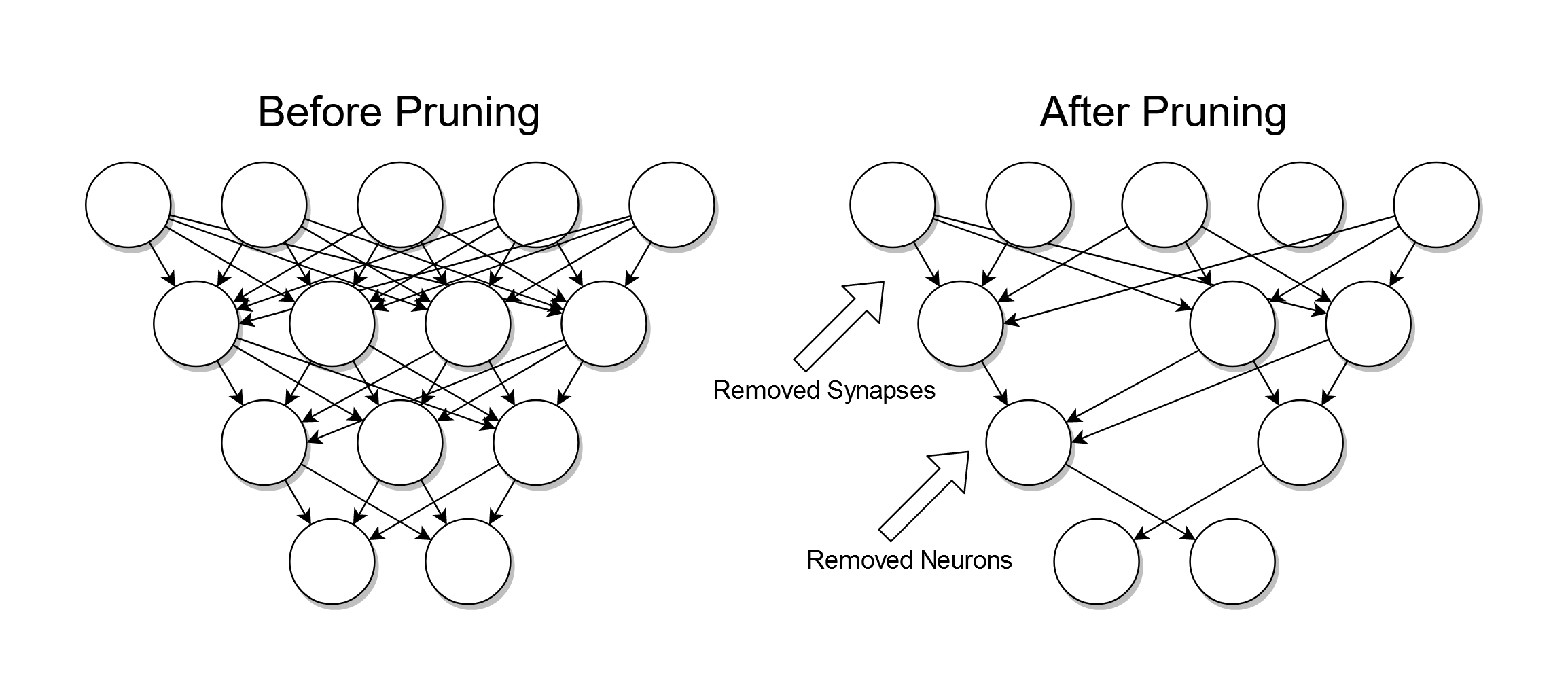|
Branching Factor
In computing, tree data structures, and game theory, the branching factor is the number of children at each node, the outdegree. If this value is not uniform, an ''average branching factor'' can be calculated. For example, in chess, if a "node" is considered to be a legal position, the average branching factor has been said to be about 35, and a statistical analysis of over 2.5 million games revealed an average of 31. This means that, on average, a player has about 31 to 35 legal moves at their disposal at each turn. By comparison, the average branching factor for the game Go is 250. Higher branching factors make algorithms that follow every branch at every node, such as exhaustive brute force searches, computationally more expensive due to the exponentially increasing number of nodes, leading to combinatorial explosion. For example, if the branching factor is 10, then there will be 10 nodes one level down from the current position, 102 (or 100) nodes two levels down, 103 ( ... [...More Info...] [...Related Items...] OR: [Wikipedia] [Google] [Baidu] |
Red-black Tree Example
Red-black or Redblack may refer to: * Ottawa Redblacks, a Canadian football team * Red/black concept, a concept in cryptography * Red-black striped snake, a colubrid snake * Red–black tree In computer science, a red–black tree is a self-balancing binary search tree data structure noted for fast storage and retrieval of ordered information. The nodes in a red-black tree hold an extra "color" bit, often drawn as red and black, wh ..., a type of self-balancing binary search tree used in computer science See also * Black and Red (other) * Red and Black (other) {{disambiguation ... [...More Info...] [...Related Items...] OR: [Wikipedia] [Google] [Baidu] |
Pruning (algorithm)
Pruning is a data compression technique in machine learning and search algorithms that reduces the size of decision trees by removing sections of the tree that are non-critical and redundant to classify instances. Pruning reduces the complexity of the final classifier, and hence improves predictive accuracy by the reduction of overfitting. One of the questions that arises in a decision tree algorithm is the optimal size of the final tree. A tree that is too large risks overfitting the training data and poorly generalizing to new samples. A small tree might not capture important structural information about the sample space. However, it is hard to tell when a tree algorithm should stop because it is impossible to tell if the addition of a single extra node will dramatically decrease error. This problem is known as the horizon effect. A common strategy is to grow the tree until each node contains a small number of instances then use pruning to remove nodes that do not provide addi ... [...More Info...] [...Related Items...] OR: [Wikipedia] [Google] [Baidu] |
Analysis Of Algorithms
In computer science, the analysis of algorithms is the process of finding the computational complexity of algorithms—the amount of time, storage, or other resources needed to execute them. Usually, this involves determining a function that relates the size of an algorithm's input to the number of steps it takes (its time complexity) or the number of storage locations it uses (its space complexity). An algorithm is said to be efficient when this function's values are small, or grow slowly compared to a growth in the size of the input. Different inputs of the same size may cause the algorithm to have different behavior, so best, worst and average case descriptions might all be of practical interest. When not otherwise specified, the function describing the performance of an algorithm is usually an upper bound, determined from the worst case inputs to the algorithm. The term "analysis of algorithms" was coined by Donald Knuth. Algorithm analysis is an important part of a broa ... [...More Info...] [...Related Items...] OR: [Wikipedia] [Google] [Baidu] |
Trees (data Structures)
In botany, a tree is a perennial plant with an elongated stem, or trunk, usually supporting branches and leaves. In some usages, the definition of a tree may be narrower, e.g., including only woody plants with secondary growth, only plants that are usable as lumber, or only plants above a specified height. But wider definitions include taller palms, tree ferns, bananas, and bamboos. Trees are not a monophyletic taxonomic group but consist of a wide variety of plant species that have independently evolved a trunk and branches as a way to tower above other plants to compete for sunlight. The majority of tree species are angiosperms or hardwoods; of the rest, many are gymnosperms or softwoods. Trees tend to be long-lived, some trees reaching several thousand years old. Trees evolved around 400 million years ago, and it is estimated that there are around three trillion mature trees in the world currently. A tree typically has many secondary branches supported clear ... [...More Info...] [...Related Items...] OR: [Wikipedia] [Google] [Baidu] |
Minimax
Minimax (sometimes Minmax, MM or saddle point) is a decision rule used in artificial intelligence, decision theory, combinatorial game theory, statistics, and philosophy for ''minimizing'' the possible loss function, loss for a Worst-case scenario, worst case (''max''imum loss) scenario. When dealing with gains, it is referred to as "maximin" – to maximize the minimum gain. Originally formulated for several-player zero-sum game theory, covering both the cases where players take alternate moves and those where they make simultaneous moves, it has also been extended to more complex games and to general decision-making in the presence of uncertainty. Game theory In general games The maximin value is the highest value that the player can be sure to get without knowing the actions of the other players; equivalently, it is the lowest value the other players can force the player to receive when they know the player's action. Its formal definition is: :\underline = \max_ \min_ W ... [...More Info...] [...Related Items...] OR: [Wikipedia] [Google] [Baidu] |
Wired (website)
''Wired'' is a bi-monthly American magazine that focuses on how emerging technologies affect culture, the economy, and politics. It is published in both print and Online magazine, online editions by Condé Nast. The magazine has been in publication since its launch in January 1993. Its editorial office is based in San Francisco, California, with its business headquarters located in New York City. ''Wired'' quickly became recognized as the voice of the emerging digital economy and culture and a pace setter in print design and web design. From 1998 until 2006, the magazine and its website, ''Wired.com'', experienced separate ownership before being fully consolidated under Condé Nast in 2006. It has won multiple National Magazine Awards and has been credited with shaping discourse around the digital revolution. The magazine also coined the term Crowdsourcing, ''crowdsourcing'', as well as its annual tradition of handing out Vaporware Awards. ''Wired'' has launched several in ... [...More Info...] [...Related Items...] OR: [Wikipedia] [Google] [Baidu] |
Hierarchical Organization
A hierarchical organization or hierarchical organisation (see spelling differences) is an organizational structure where every entity in the organization, except one, is subordinate to a single other entity. This arrangement is a form of hierarchy. In an organization, this hierarchy usually consists of a singular/group of power at the top with subsequent levels of power beneath them. This is the dominant mode of organization among large organizations; most corporations, governments, criminal enterprises, and organized religions are hierarchical organizations with different levels of management power or authority. For example, the broad, top-level overview of the hierarchy of the Catholic Church consists of the Pope, then the Cardinals, then the Archbishops, and so on. Another example is the hierarchy between the four castes in the Hindu caste system, which arises from the religious belief "that each is derived from a different part of the creator God’s (Brahma) body, descendin ... [...More Info...] [...Related Items...] OR: [Wikipedia] [Google] [Baidu] |
Hierarchy
A hierarchy (from Ancient Greek, Greek: , from , 'president of sacred rites') is an arrangement of items (objects, names, values, categories, etc.) that are represented as being "above", "below", or "at the same level as" one another. Hierarchy is an important concept in a wide variety of fields, such as architecture, philosophy, design, mathematics, computer science, organizational theory, systems theory, systematic biology, and the social sciences (especially political science). A hierarchy can link entities either directly or indirectly, and either vertically or diagonally. The only direct links in a hierarchy, insofar as they are hierarchical, are to one's immediate superior or to one of one's subordinates, although a system that is largely hierarchical can also incorporate alternative hierarchies. Hierarchical links can extend "vertically" upwards or downwards via multiple links in the same direction, following a path (graph theory), path. All parts of the hierarchy that are ... [...More Info...] [...Related Items...] OR: [Wikipedia] [Google] [Baidu] |
K-ary Tree
In graph theory, an ''m''-ary tree (for nonnegative integers ''m'') (also known as ''n''-ary, ''k''-ary, ''k''-way or generic tree) is an Arborescence (graph theory), arborescence (or, for some authors, an ordered tree) in which each node has no more than ''m'' children. A binary tree is an important case where ''m'' = 2; similarly, a ternary tree is one where ''m'' = 3. Types of ''m''-ary trees * A full ''m''-ary tree is an ''m''-ary tree where within each level every node has 0 or ''m'' children. * A complete ''m''-ary tree (or, less commonly, a perfect ''m''-ary tree) is a full ''m''-ary tree in which all leaf nodes are at the same depth. Properties of ''m''-ary trees * For an ''m''-ary tree with height ''h'', the upper bound for the maximum number of leaves is m^h. * The height ''h ''of an ''m''-ary tree does not include the root node, with a tree containing only a root node having a height of 0. * The height of a tree is equal to the maximum depth ''D'' of any no ... [...More Info...] [...Related Items...] OR: [Wikipedia] [Google] [Baidu] |
Combinatorial Explosion
In mathematics, a combinatorial explosion is the rapid growth of the complexity of a problem due to the way its combinatorics depends on input, constraints and bounds. Combinatorial explosion is sometimes used to justify the intractability of certain problems.http://intelligence.worldofcomputing/combinatorial-explosion Combinatorial Explosion. Examples of such problems include certain mathematical functions, the analysis of some puzzles and games, and some pathological examples which can be modelled as the Ackermann function. ...
|
Computing
Computing is any goal-oriented activity requiring, benefiting from, or creating computer, computing machinery. It includes the study and experimentation of algorithmic processes, and the development of both computer hardware, hardware and software. Computing has scientific, engineering, mathematical, technological, and social aspects. Major computing disciplines include computer engineering, computer science, cybersecurity, data science, information systems, information technology, and software engineering. The term ''computing'' is also synonymous with counting and calculation, calculating. In earlier times, it was used in reference to the action performed by Mechanical computer, mechanical computing machines, and before that, to Computer (occupation), human computers. History The history of computing is longer than the history of computing hardware and includes the history of methods intended for pen and paper (or for chalk and slate) with or without the aid of tables. ... [...More Info...] [...Related Items...] OR: [Wikipedia] [Google] [Baidu] |






